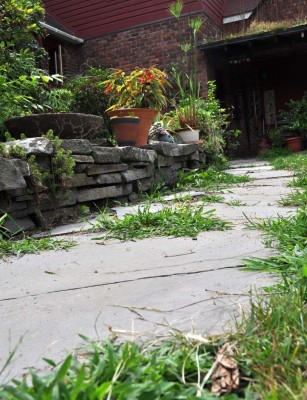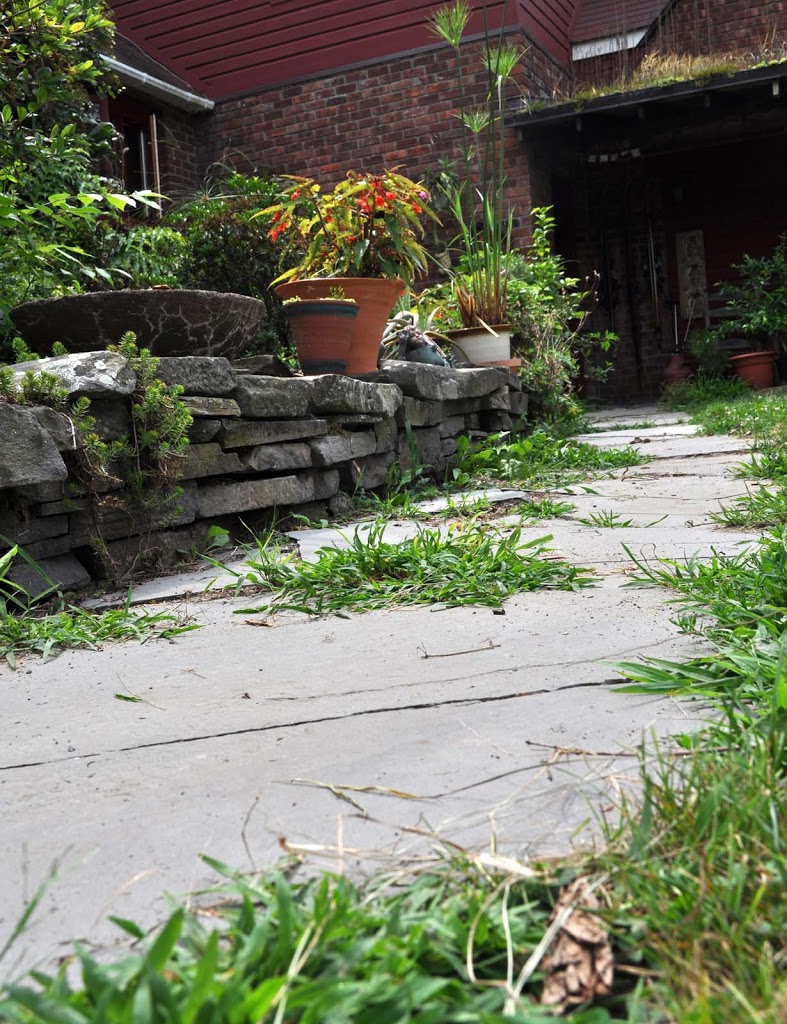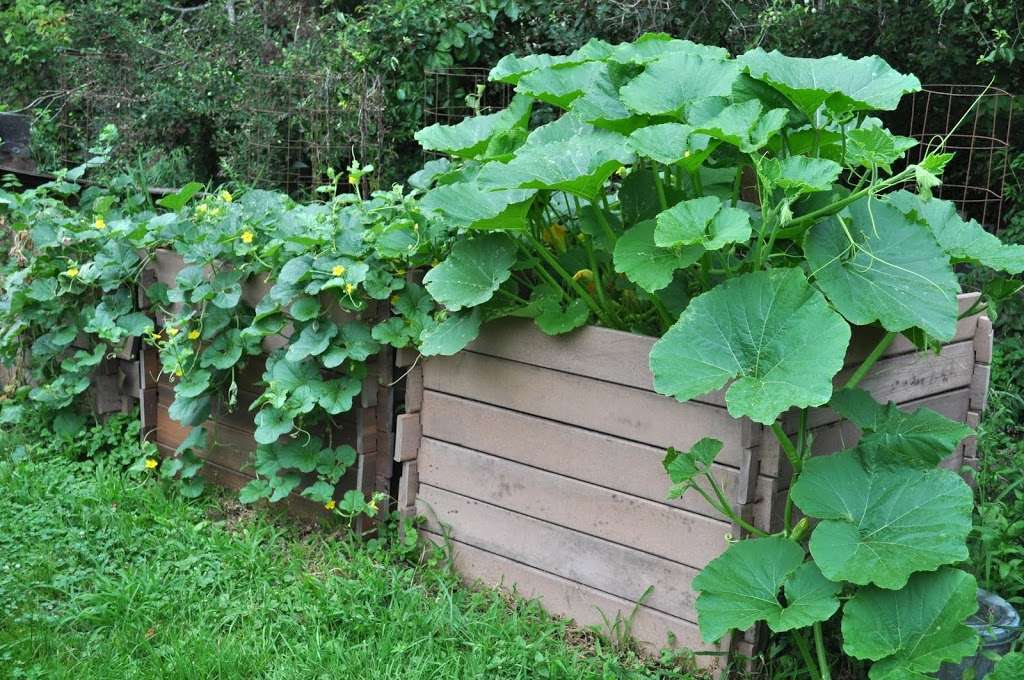[barnyard grass. purslane, dodder]
Hot weather and rampant plant growth prompt me to add a word to the traditional English round, “Sumer is icumen in, Lhude sing cuccu!” My new version is “Sumer weeds is icumen in, Lhude sing cuccu!” (“Summer weeds have arrived, Loudly sing, Cuckoo!”)
Almost overnight, big clumps of barnyard grass (Echinochloa crus-galli) have appeared in joints of the flagstone path leading up to my front door. It seems that just a week ago, a combination of hand pulling, weed whacking, and vinegar sprays had those joints free of everything except for a bit of moss. Today I had to cut clumps out with a bread knife that was useless on bread but has proved very useful for in the garden.

Besides being unsightly, those clumps of barnyard grass are unwelcome because they’re spreading. The stems prostrate stems root wherever they touch bare ground. And the emerging seed heads are prolific seed producers – reportedly over 300,000 seeds per square yard.
You might think I should relax because barnyard grass is an annual that flops down dead with the first autumn frost. But all those seeds are going to sit in the soil, some germinating next spring, some the following spring, and on and on. Another of the plant’s common names says it all: panic-grass.
—————————————–
Purslane is another summer weed that’s picked up steam in the past few weeks. The problem with purslane is that you can’t just pull it out and toss it on the ground. The succulent leaves and stems are very resistant to drought, staying plumped up with water even when detached from the roots. Stems and leaves left on the ground take root and become whole, new plants.
A recent meal at a fancy restaurant in New York City solved the purslane problem. I’d always known purslane to be edible but the taste and texture never appealed to me. I thought I’d give purslane another try in the form of the beet, goat cheese, and purslane salad listed on the menu.
The salad was delicious, so for the next dinner at home we weeded and harvested at the same time, on the same plant: purslane. As a matter of fact, the garden seemed to be lacking in sufficient purslane to meet our new found needs. I’m not yet ready to start sowing purslane seed, which you can actually purchase. We’ll just harvest more conservatively.
For all I knew, the purslane in that restaurant salad might have been harvested from cracks in sunny pavement behind the restaurant.
——————————————
For gustatory use, purslane shouldn’t be confused with another, similarly prostrate plant , spotted spurge, about which I wrote a year ago. Stems and leaves of spotted spurge are not succulent. Like other members of the spurge family, spotted spurge exudes a toxic, milky sap when injured.
——————————————-
Yellow threads weaving up, down, and all around clumps of blackberry, dock, and other wild plants along a road recently caught my eye. These threads are the stems of a most interesting summer weed: dodder (Cuscuta spp.)
The reason dodder is yellow and, incidentally, leafless is because it has no chlorophyll. How does it make food, then? It doesn’t! Dodder is a parasitic plant.
Dodder seeds germinate and the plant’s roots enter the soil only long enough to support a few inches of stem growth. Once young dodder grows a few inches tall and comes in contact with a potential plant victim, it inserts a modified root right into the plant. The grounded dodder root dies and the remaining dodder plant spends summer sucking nutrients and carbohydrates from its host plant, offering nothing in return.
Dodder is a very effective weed. It makes many seeds each season, the seeds do not germinate all at once, some waiting years before germinating, and it has a wide range of plant hosts. Like barnyard grass, purslane, and spotted spurge, the first frost of autumn kills the plant. Not the seeds, though.






Leave a Reply
Want to join the discussion?Feel free to contribute!